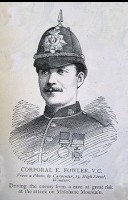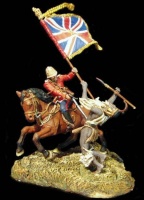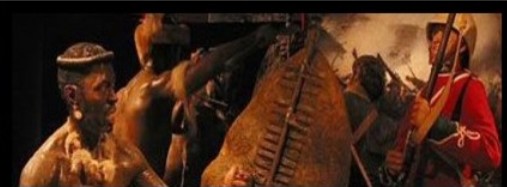| Latest topics | » The Pictorial World - March 15th 1879 Yesterday at 1:13 pm by ben2000 » The lost diary of Pvt James Owen Thu Jul 25, 2024 12:03 pm by miklew » Last of the 24th at Isandhlwana Wed Jul 24, 2024 6:16 pm by John Young » What was the uniform of field marshals/generals in the zulu war? Mon Jul 22, 2024 6:53 am by John Young » Henderson and the NNH at Rorke's Drift  Sat Jul 20, 2024 12:17 pm by SRB1965 » Capt. D. Hayes 1/3rd Regt., NNC Thu Jul 18, 2024 11:11 am by Julian Whybra » The Wrecked Camp Wed Jul 17, 2024 4:33 pm by Julian Whybra » Private N/N John Robert Branch 90th Regiment and his discovered diary Mon Jul 15, 2024 8:53 pm by 1879graves » Private John Scott 24th Regiment a fugitive at large Sun Jul 14, 2024 12:06 pm by 1879graves » 90th foot sgt T. Collins 214 Sun Jul 14, 2024 10:57 am by johnman » Baron Von Steitencron Wed Jul 10, 2024 3:10 pm by Julian Whybra » Sgt Joseph Windridge, Defender of Rorke's Drift - Memorial Tue Jul 09, 2024 3:15 am by 90th » Writing advice Sun Jul 07, 2024 4:04 pm by Julian Whybra » South Africa 1877-79, 1 clasp, 1877-8-9 (4389 Fr. Sergt. S. Smith. O/2. Bde. R.A.) Sun Jul 07, 2024 9:30 am by rai » The trashing of the Zulu monument to the brave warriors at Isandlawana March 12, 2024 has been blamed on scrap metal scavengers. Thu Jul 04, 2024 7:41 pm by ADMIN» The Goodwill Zulu Festival: Celebrating the Welsh and KwaZulu Natal Shared Heritage. Thu Jul 04, 2024 7:27 pm by ADMIN» Any nominal role of G Coy 2/24th regiment  Thu Jul 04, 2024 11:18 am by Wayne » Bassage Diary Thu Jul 04, 2024 9:31 am by Julian Whybra » Prior to Sihayo's Kraal  Thu Jul 04, 2024 9:19 am by 90th » British Fort Locations Thu Jul 04, 2024 3:40 am by 90th » Sergeant 1064 Tom Hick / Hicks G Company 2/24th Regiment Wed Jul 03, 2024 11:05 am by Julian Whybra » A Hungarian soldier in the Zulu War (?) Fri Jun 28, 2024 2:31 pm by Mr M. Cooper » Private 25B/279 Henry Sears Bugler E Company 24th Reg. KIA Isandlwana Thu Jun 27, 2024 1:07 pm by gardner1879 » Hamilton Browne's birthday Fri Jun 21, 2024 9:22 am by Julian Whybra » Zulu "Corps" Thu Jun 20, 2024 6:01 pm by Hobbes » Army Pay Department Personnel Thu Jun 20, 2024 11:49 am by Julian Whybra » Ntshingwayo birth date Sun Jun 16, 2024 11:37 am by Hobbes » Zibhebhu and Cetshwayo's family Wed Jun 05, 2024 9:11 pm by Julian Whybra » Smith's Store/Hotel Wed Jun 05, 2024 6:06 pm by Julian Whybra » Corporal James Frowen Williams F Company.  Tue Jun 04, 2024 5:20 pm by Julian Whybra » Shaka iLembe Sat Jun 01, 2024 1:27 pm by Jon84 » Bugler 1415 Thomas Finn / Flin 90th Regiment  Sat May 25, 2024 11:28 am by johnman » Inspector-General Evelyn Richard Hugh Pollard Tue May 14, 2024 10:13 am by ADMIN» Alfred Fairlie Henderson photographs. Sat May 11, 2024 8:01 am by Julian Whybra » Fairlie's Native Police Thu May 02, 2024 9:12 pm by Hobbes |
| July 2024 | | Mon | Tue | Wed | Thu | Fri | Sat | Sun |
|---|
| 1 | 2 | 3 | 4 | 5 | 6 | 7 | | 8 | 9 | 10 | 11 | 12 | 13 | 14 | | 15 | 16 | 17 | 18 | 19 | 20 | 21 | | 22 | 23 | 24 | 25 | 26 | 27 | 28 | | 29 | 30 | 31 | | | | |  Calendar Calendar |
|
| Top posting users this month | |
| New topics | » The Pictorial World - March 15th 1879 Yesterday at 1:13 pm by ben2000 » The lost diary of Pvt James Owen Thu Jul 25, 2024 12:03 pm by miklew » Last of the 24th at Isandhlwana Wed Jul 24, 2024 5:53 pm by miklew » What was the uniform of field marshals/generals in the zulu war? Sun Jul 21, 2024 12:30 pm by darthvaix » Henderson and the NNH at Rorke's Drift  Fri Jul 19, 2024 1:29 pm by SRB1965 » Capt. D. Hayes 1/3rd Regt., NNC Wed Jul 17, 2024 10:52 pm by Julian Whybra » The Wrecked Camp Sun Jul 14, 2024 8:51 am by 61MECH » The trashing of the Zulu monument to the brave warriors at Isandlawana March 12, 2024 has been blamed on scrap metal scavengers. Thu Jul 04, 2024 7:41 pm by ADMIN» The Goodwill Zulu Festival: Celebrating the Welsh and KwaZulu Natal Shared Heritage. Thu Jul 04, 2024 7:27 pm by ADMIN |
| Zero tolerance to harassment and bullying. | |
Due to recent events on this forum, we have now imposed a zero tolerance to harassment and bullying. All reports will be treated seriously, and will lead to a permanent ban of both membership and IP address.
Any member blatantly corresponding in a deliberate and provoking manner will be removed from the forum as quickly as possible after the event.
If any members are being harassed behind the scenes PM facility by any member/s here at 1879zuluwar.com please do not hesitate to forward the offending text.
We are all here to communicate and enjoy the various discussions and information on the Anglo Zulu War of 1879. Opinions will vary, you will agree and disagree with one another, we will have debates, and so it goes.
There is no excuse for harassment or bullying of anyone by another person on this site.
The above applies to the main frame areas of the forum.
The ring which is the last section on the forum, is available to those members who wish to partake in slagging matches. That section cannot be viewed by guests and only viewed by members that wish to do so. |
| Fair Use Notice | | Fair use notice.
This website may contain copyrighted material the use of which has not been specifically authorised by the copyright owner.
We are making such material and images are available in our efforts to advance the understanding of the “Anglo Zulu War of 1879. For educational & recreational purposes.
We believe this constitutes a 'fair use' of any such copyrighted material, as provided for in UK copyright law. The information is purely for educational and research purposes only. No profit is made from any part of this website.
If you hold the copyright on any material on the site, or material refers to you, and you would like it to be removed, please let us know and we will work with you to reach a resolution. |
| | | Recoil MH or 303 |  |
| | | Author | Message |
|---|
impi

Posts : 2308
Join date : 2010-07-02
Age : 44
 |  Subject: Recoil MH or 303 Subject: Recoil MH or 303  Wed Dec 08, 2010 9:56 pm Wed Dec 08, 2010 9:56 pm | |
| Just a quick question. Which produces the most re-coil. The MH or 303. I think it’s the M.H |
|   | | Neil Aspinshaw

Posts : 553
Join date : 2009-10-14
Location : Loughborough
 |  Subject: Re: Recoil MH or 303 Subject: Re: Recoil MH or 303  Thu Dec 09, 2010 8:28 am Thu Dec 09, 2010 8:28 am | |
| Impi
Not much in it, the .303 is a 2300 fps high velocity "crack", whilst the M-H is a 1320 fps "whumph", Paper patched rounds actually make the M-H quite a pleasant round to shoot, compared to modern big oversize cast bullets. The original buller was about pure lead and 12% tin, diameter was .451 which is just over bore size of .450", once wrapped in 100% cotton fibre paper it went to .459", the rifleing picking up the paper, not metal/metal, the paper too was dipped into beeswax, to serve two purposes, waterproofing and lubricaton.
With a full load and patched bullet I would expect to fire 30-40+ rounds at the range on a morning, in a shirt no problem.
Fouling and leading will cause a modicum of increase in recoil, however a properly patched and lubricated round will scrub fouling away each round (that's what it was designed to do), In a .303 this is not an issue as the powder burn is almost complete, the .303 bullet is metal jacketed, firstly in cupro-nickle, later copper, there is no lead fouling. The reason why it is copper jacketed is a) lubrication (soft), b) it stops the lead bullet breaking up in mid flight due the huge centrifugal forces.
A M-H carbine, with the correct 70 grain load and 420 grain patched bullet is a bit more jumpy, however compare this to a No5 .303 Jungle Carbine, and that old boy I can assure you is a beast, even with a soft rubberised buttpad, 50 years on and theose buttpads are have now lost thier cushion, and it shakes yer filling loose.
I can liken a M-H to a 12 bore shotgun.
|
|   | | littlehand

Posts : 7076
Join date : 2009-04-24
Age : 55
Location : Down South.
 |  Subject: Re: Recoil MH or 303 Subject: Re: Recoil MH or 303  Thu Dec 09, 2010 3:10 pm Thu Dec 09, 2010 3:10 pm | |
| [You must be registered and logged in to see this image.]Not sure I believe this. But if is true, I wonder what the shoulders of the defenders at R.D looked like. |
|   | | John

Posts : 2558
Join date : 2009-04-06
Age : 61
Location : UK
 |  Subject: Re: Recoil MH or 303 Subject: Re: Recoil MH or 303  Thu Dec 09, 2010 4:43 pm Thu Dec 09, 2010 4:43 pm | |
| Surly you wouldn't fire it if it slipped on to your bicep. Your suppose to fire from the shoulder. |
|   | | littlehand

Posts : 7076
Join date : 2009-04-24
Age : 55
Location : Down South.
 |  Subject: Re: Recoil MH or 303 Subject: Re: Recoil MH or 303  Thu Dec 09, 2010 4:59 pm Thu Dec 09, 2010 4:59 pm | |
| The Man-Eaters Of Tsavo. [You must be registered and logged in to see this link.]Page 100 303 and the MH. Its appears the MH had more stopping power than a 303. Even after be shot 5 times with a 303, he had to finshed the Lion off with a M.H. |
|   | | | | Recoil MH or 303 |  |
|
| | Permissions in this forum: | You cannot reply to topics in this forum
| |
| |
| |
